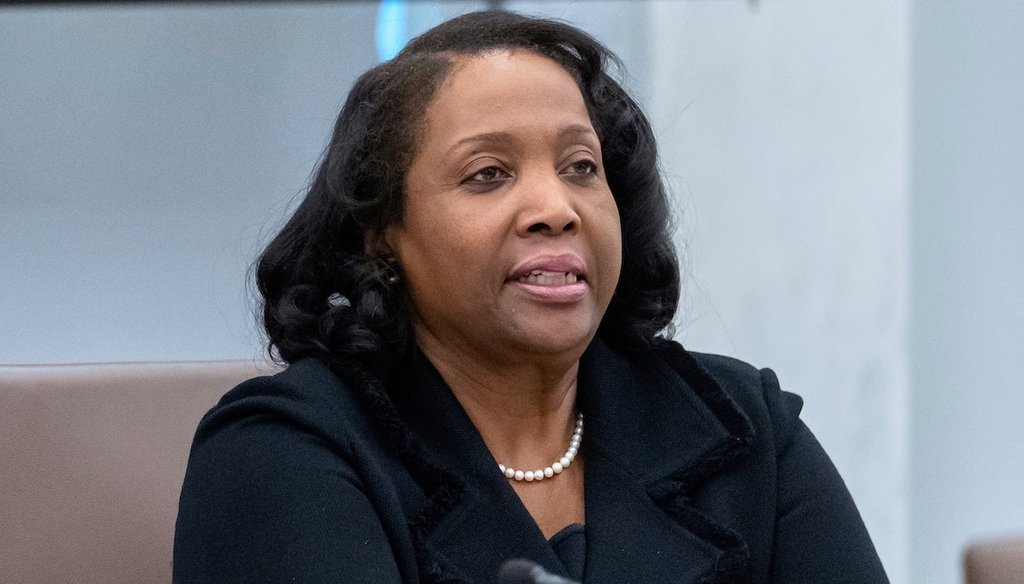
The Fed’s most closely watched power comes from monetary policy decisions, which are determined by the Federal Open Market Committee. This committee, which meets at least every six weeks, includes the seven governors, the president of the New York Fed, and four presidents of the remaining 11 regional banks, who rotate on and off the committee.
This structure means that Cook is one of the committee’s seven permanent members. One position is currently vacant, following Biden appointee Adriana Kugler’s Aug. 8 resignation. Trump nominated White House Council of Economic Advisers chair Stephen Miran to succeed Kugler, which will require Senate confirmation. Cook, if she is forced out, would offer Trump a second governor vacancy to fill.
During his first term, Trump appointed Michelle Bowman and Christopher Waller as Fed governors. He also initially appointed Powell as chair, before becoming disenchanted with him.
What has Trump done to try to oust Cook?
After increasing rhetoric against Cook, Trump on Aug. 25 released a letter in which he said he was immediately dismissing Cook on Truth Social.
Trump cited a “criminal referral” from Federal Housing Finance Agency Director William Pulte, a Trump appointee, relating to mortgage fraud. Pulte and Trump allege that Cook falsely attested on loan forms that homes in both Atlanta and Ann Arbor, Michigan, qualified as her primary residence, potentially allowing her to secure a lower interest rate.
“The Federal Reserve has tremendous responsibility for setting interest rates and regulating reserve and member banks,” Trump wrote. “The American people must be able to have full confidence in the honesty of the members entrusted with setting policy and overseeing the Federal Reserve. In light of your deceitful and potentially criminal conduct in a financial matter, they cannot and I do not have such confidence in your integrity.”
Cook said the firing was unsupported by the law.
“President Trump purported to fire me ‘for cause’ when no cause exists under the law, and he has no authority to do so,” her statement said. “I will not resign. I will continue to carry out my duties to help the American economy as I have been doing since 2022.”
On Aug. 26, her lawyer, Abbe Lowell, announced that Cook would sue to block her firing.
The same day, the Fed said through a spokesperson that “Cook has indicated through her personal attorney that she will promptly challenge this action in court and seek a judicial decision that would confirm her ability to continue to fulfill her responsibilities as a Senate-confirmed member of the Board of Governors of the Federal Reserve System.”
How can a Fed governor be removed?
The Federal Reserve Act says governors can be removed from their position only “for cause.” The interpretation of this phrase will be central to the legal fight over Cook’s status.
“‘For cause’ generally means inefficiency, neglect of duty, or malfeasance in office,” said Daniel Farber, a University of California-Berkeley law professor. “Arguably, none of those apply since the conduct took place before Cook was in office. But legal precedent is scanty.”
In addition, Trump’s decision to fire Cook rests on “allegations from one of his loyalists,” rather than a conviction, said Carl Tobias, a University of Richmond law professor.
Trump may not need a conviction, which could take more than a year to play out, said Frank O. Bowman III, a University of Missouri emeritus law professor. But Bowman said something more than an allegation ought to be necessary.
“Unless judges are willing to impose some minimal process, some standard of misconduct seriousness, and some evidentiary standard, the ‘for cause’ requirement becomes illusory,” Bowman said.
Legal experts expect the Supreme Court to weigh in on the question eventually. Under Trump, the court has been deferential to the president’s ability to fire federal officials, even those that had previously been assumed to be safe from such ousters.
However, in a May procedural decision, a majority allowed Trump to proceed in removing members of the National Labor Relations Board and the Merit Systems Protection Board — but specifically noted that the Federal Reserve is a “uniquely structured, quasi-private entity” that fell outside the bounds of its decision to green-light Trump’s firings elsewhere.
If Cook’s case reaches the high court, Farber said, “the odds favor her, but I don’t think it’s a slam-dunk case.”
Why is this dispute important?
Trump wants the Fed to lower interest rates, which could encourage investment and home purchases.
However, some economists say this would be risky — not only because inflation hasn’t fully returned to the Fed’s target 2% rate since spiking to around 9% in 2022, but also because Trump’s aggressive tariff policy could drive prices higher. The Fed was designed with political insulation, because higher rates to keep inflation low may not be popular with the president or other elected officials.
